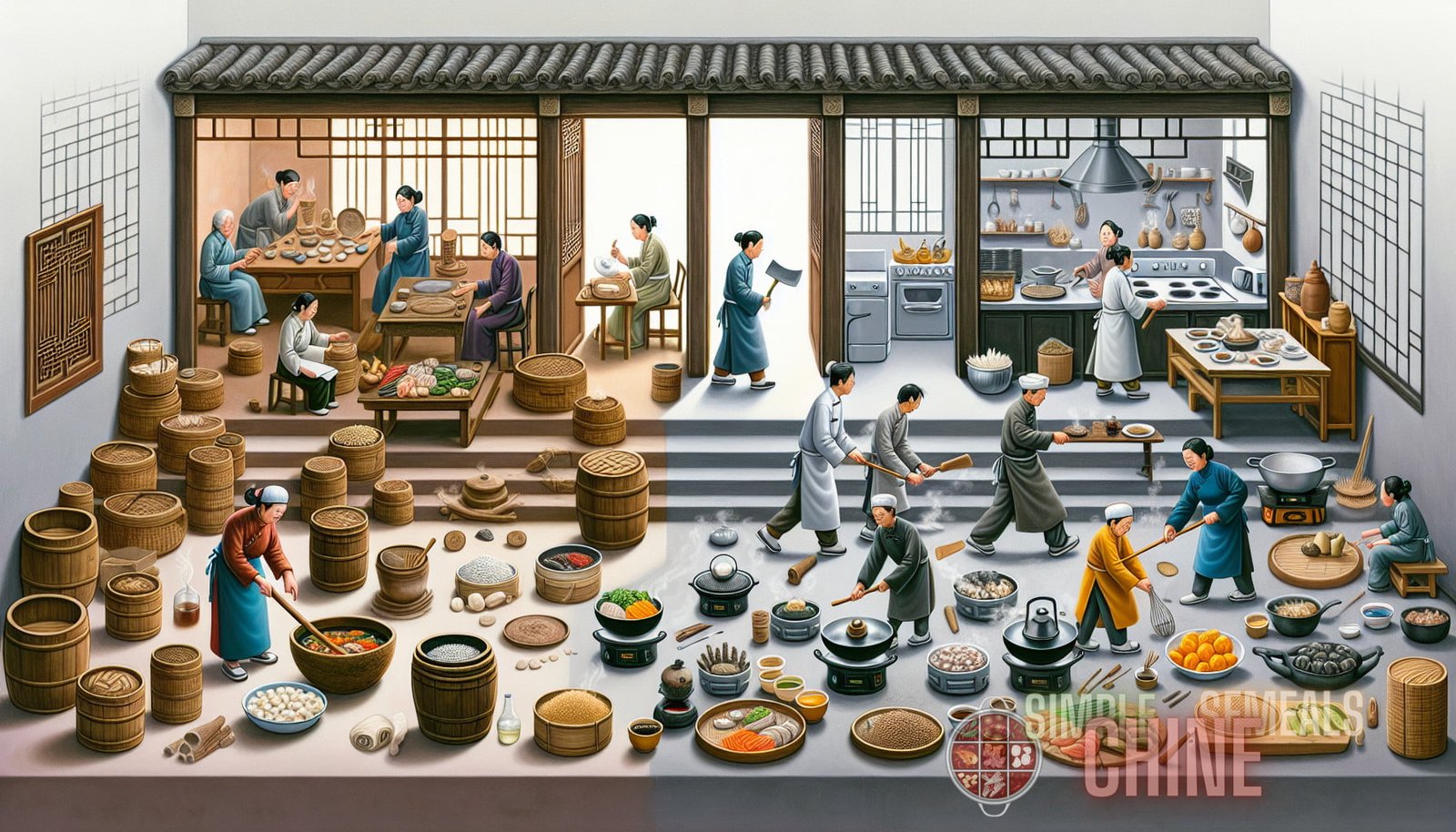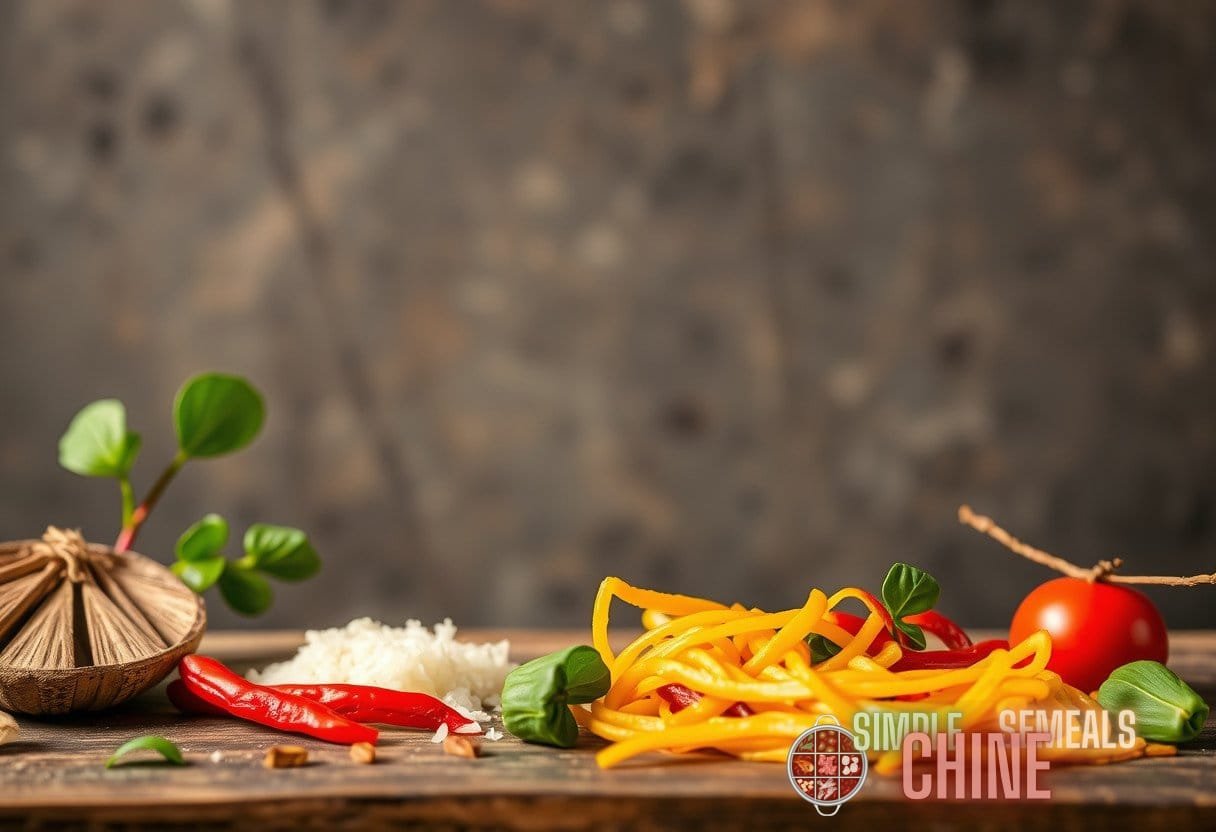Introduction
Chinese culinary heritage is rich and diverse, with a history dating back centuries. Traditional Chinese dishes have evolved over time, reflecting the influences of different dynasties, regions, and cultural exchanges. From the lavish meals of emperors to the everyday eats of common people, Chinese cuisine offers a glimpse into the country’s cultural heritage. In this article, we will explore the centuries-old evolution of Chinese traditional dishes, delving into the ingredients, cooking techniques, and flavors that have shaped this exceptional culinary tradition.
The Roots of Chinese Cuisine
Chinese cuisine has its roots in Neolithic times, with evidence of early cooking techniques found in pottery remains. The Yellow Emperor, considered the legendary ancestor of the Chinese people, is often credited with the development of Chinese cuisine. During his reign, the basic principles of food preparation, such as chopping, boiling, and roasting, were established.
Over time, the cooking techniques of steaming, stir-frying, and deep-frying became prevalent, and the use of spices and seasonings expanded. The introduction of wheat and rice cultivation further influenced the development of traditional dishes, with rice becoming a staple food in southern China and wheat-based products, such as noodles and dumplings, gaining popularity in the north.
Chinese Flavors
The flavors of Chinese cuisine are diverse and complex, with five primary taste sensations: sweet, sour, bitter, spicy, and salty. These tastes are carefully balanced in traditional dishes to create a harmonious and well-rounded flavor profile.
The sweet flavor is derived from ingredients like sugar, honey, and fruits, and is used to enhance the natural sweetness of certain ingredients. Sourness is achieved through the use of ingredients like vinegar, citrus fruits, and pickled vegetables, adding a tangy and refreshing element to dishes.
Bitterness is less commonly used, but it can be found in certain traditional Chinese herbs and teas, which are believed to have medicinal properties. Spiciness comes from the liberal use of chili peppers, Sichuan peppercorns, and other pungent spices that add heat and intensity to dishes. Finally, saltiness is created by the addition of soy sauce, fermented soybean paste, and other salty ingredients, providing depth and richness to the overall flavor.
For an in-depth look at Chinese flavors and how they contribute to traditional dishes, check out this article.The Influence of Dynasties
Chinese cuisine has been shaped by the different dynasties that ruled the country throughout history. Each dynasty brought its own culinary traditions and preferences to the table, contributing to the diverse range of dishes that we know today.
One of the most influential dynasties in Chinese culinary history is the Tang Dynasty (618-907 AD). Known as the “golden age” of Chinese cuisine, the Tang Dynasty saw the development of intricate cooking techniques, the use of rare and exotic ingredients, and the establishment of elaborate banquet traditions. This period gave rise to many of the iconic dishes that are still revered today.
Another notable dynasty is the Qing Dynasty (1644-1912), which marked the last imperial dynasty of China. During this time, Manchu cuisine, blending elements from the Manchu ethnic group, became popular. The Qing Dynasty also witnessed the introduction of new ingredients like tomatoes, potatoes, and chili peppers from the New World, forever changing the landscape of Chinese cuisine.
Ancient Chinese Cuisine
To explore the origins of Chinese traditional dishes, take a look at this article for an in-depth dive into ancient cooking techniques and ingredients.Regional Diversity
China is a vast country with diverse climates, landscapes, and cultural traditions. This diversity is reflected in the country’s regional cuisines, each with its own distinct flavors and cooking styles. The four major regional cuisines in China are:
- Cantonese Cuisine: Hailing from Guangdong province, Cantonese cuisine is one of the most well-known regional cuisines. It is characterized by its delicate flavors, fresh ingredients, and emphasis on seafood.
- Sichuan Cuisine: Known for its bold and spicy flavors, Sichuan cuisine is popular for its generous use of chili peppers and Sichuan peppercorns. It is also famous for its numbing sensation, known as “mala,” which adds a unique element to the dishes.
- Shandong Cuisine: Originating from the coastal province of Shandong, this cuisine is famous for its seafood dishes. It is characterized by its emphasis on light flavors, fresh ingredients, and a variety of cooking techniques.
- Hunan Cuisine: Hailing from the province of Hunan, this cuisine is known for its fiery flavors and bold use of spices. Chili peppers, garlic, and shallots are commonly used to create the distinctive taste of Hunan cuisine.
In addition to these major regional cuisines, there are numerous other regional specialties, such as the delicate and flavorful Jiangsu cuisine, the hearty and robust Fujian cuisine, and the exotic and adventurous Yunnan cuisine. Each regional cuisine offers a unique culinary experience, showcasing the diverse flavors and ingredients of China.
From Emperors to Everyday Eaters
Chinese cuisine has a long history of catering to various social classes, from the opulent feasts of emperors and nobles to the humble fare of everyday eaters. The dishes enjoyed by the ruling class were often elaborate and extravagant, showcasing the wealth and power of the dynasty.
During the Ming Dynasty (1368-1644), royal banquets became even more sophisticated, with elaborate courses and a wide selection of dishes. The Qing Dynasty continued this tradition, with banquets serving hundreds of dishes that represented the height of culinary artistry.
For common people, daily meals were simpler and focused on practicality and nutrition. Rice, noodles, and vegetables formed the backbone of everyday dishes, while meat and fish were considered more luxurious and enjoyed on special occasions.
Eating as a Social Activity

In Chinese culture, eating is not just about sustenance; it is a social activity that brings people together. Family gatherings, banquets, and festivals are occasions for sharing meals and celebrating the bonds between friends and loved ones.
One significant aspect of Chinese dining etiquette is the concept of “round-table dining,” where everyone shares dishes placed in the center of the table. This fosters a sense of community and encourages interaction among diners.
Another important tradition is the art of toasting or “ganbei,” where guests raise their glasses and clink them together while offering a toast. This is a way of showing respect, expressing gratitude, and building camaraderie.
Presentation and Symbolism
Chinese traditional dishes are not only flavorful but also visually appealing. Presentation plays a crucial role in Chinese cuisine, with dishes often arranged in a balanced and artistic manner. Care is taken to incorporate a variety of colors, textures, and shapes, creating a feast for the eyes as well as the palate.
Symbolism is also deeply ingrained in Chinese culinary traditions. Certain ingredients and dishes are associated with auspicious meanings and are often prepared for special occasions or festivals. For example:
- Longevity Noodles: These long, uncut noodles symbolize long life and are traditionally eaten on birthdays and other celebrations.
- Whole Fish: A whole fish, with the head and tail intact, symbolizes completeness and abundance. It is often served during Chinese New Year to represent a good start and a prosperous year ahead.
- Dumplings: Dumplings are a symbol of wealth and prosperity due to their resemblance to ancient Chinese gold ingots. They are commonly eaten during Chinese New Year and other festive occasions.
These symbolic dishes not only hold cultural significance but also add to the overall experience of enjoying Chinese traditional cuisine.
The Influence of Chinese Cuisine on the World
Chinese cuisine has had a significant impact on the culinary world beyond its borders. As Chinese immigrants settled in different parts of the world, they brought with them their culinary traditions, resulting in the emergence of Chinese diaspora cuisines.
Chinese-American cuisine, for example, is a fusion of Chinese flavors and American ingredients, catering to the local tastes and preferences. General Tso’s Chicken, Chop Suey, and Egg Rolls are some of the dishes that have become popular in Chinese-American cuisine.
Similarly, Chinese cuisines in other parts of the world, such as Malaysian-Chinese, Indonesian-Chinese, and Thai-Chinese cuisines, have integrated local ingredients and cooking techniques, creating unique regional variations.
Chinese culinary traditions have also influenced global cooking techniques. Stir-frying, a staple cooking method in Chinese cuisine, has become popular worldwide for its quick and healthy preparation. The use of soy sauce and other Chinese seasonings has become commonplace in many international cuisines, adding depth and complexity to dishes.
The Globalization of Chinese Cuisine
The globalization of Chinese cuisine has been facilitated by the increasing popularity of Chinese restaurants and the availability of Chinese ingredients in supermarkets. Today, Chinese dishes can be found in almost every major city around the world, catering to a diverse range of palates and preferences.
Chinese cuisine has become an integral part of the global culinary landscape, reflecting the rich history and diverse flavors of China.
Conclusion
Chinese traditional dishes have evolved over centuries, influenced by dynasties, regional diversity, and cultural exchanges. From the elaborate banquets of emperors to the everyday eats of common people, Chinese cuisine offers a glimpse into the country’s culinary heritage.
Regional cuisines like Cantonese, Sichuan, Shandong, and Hunan showcase the diverse flavors and cooking styles of different parts of China. Chinese traditional dishes are not only flavorful but also visually appealing, with presentation and symbolism playing crucial roles.
The influence of Chinese cuisine extends beyond China’s borders, with Chinese diaspora cuisines and global cooking techniques incorporating Chinese flavors and ingredients.
With its rich history, diverse flavors, and deep cultural significance, Chinese cuisine continues to captivate food lovers around the world.



